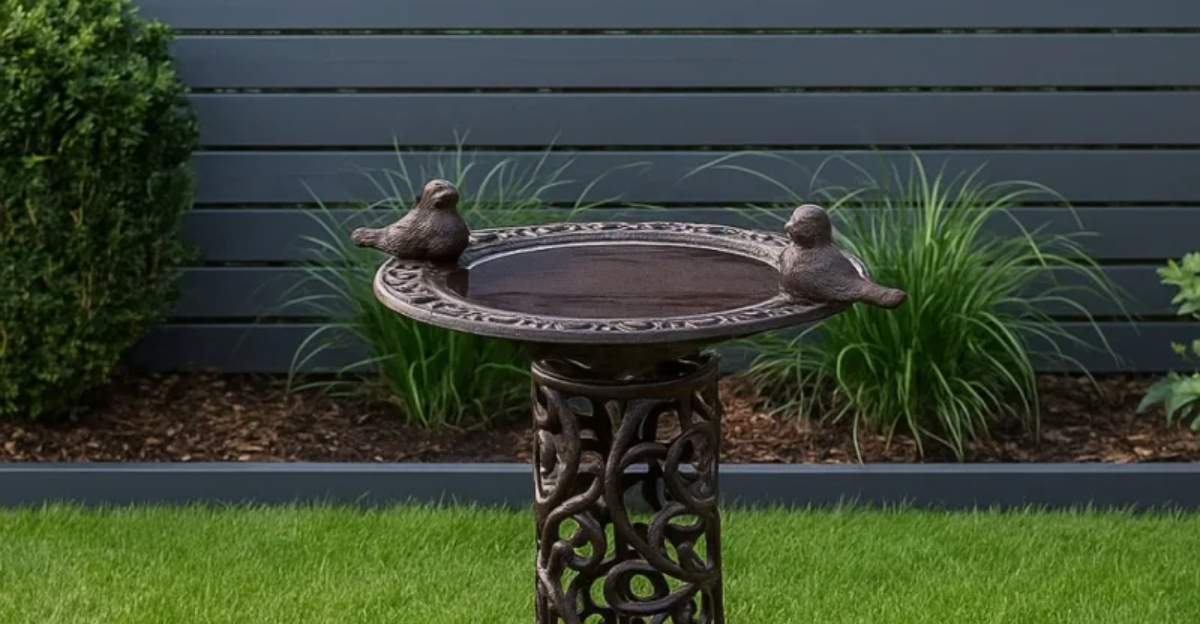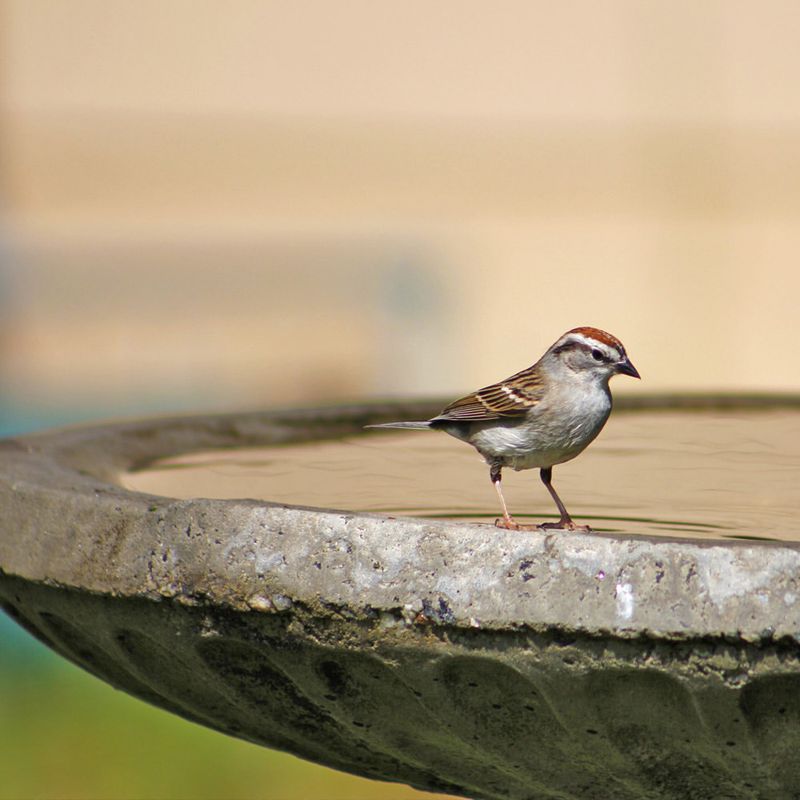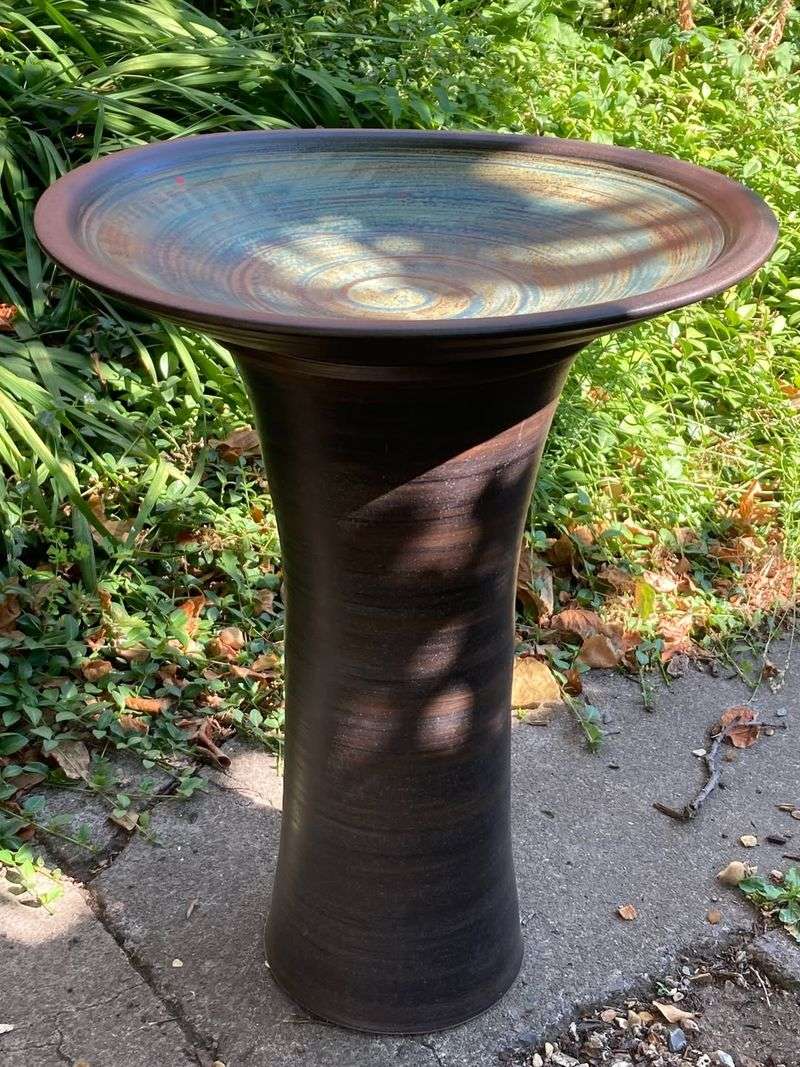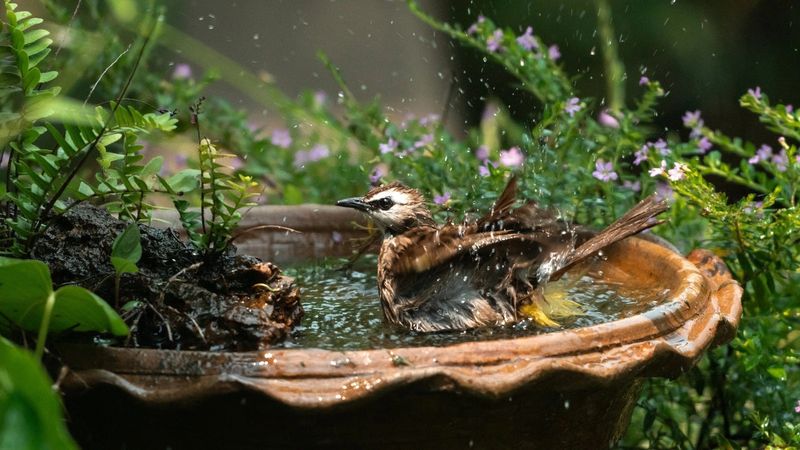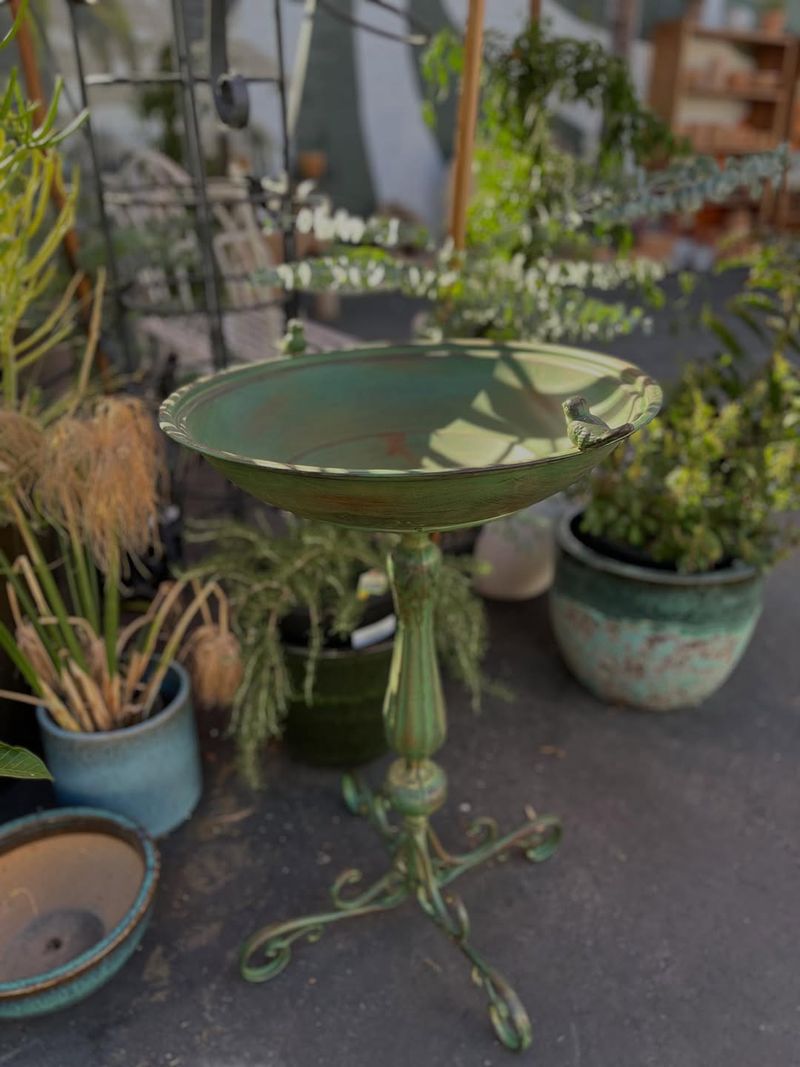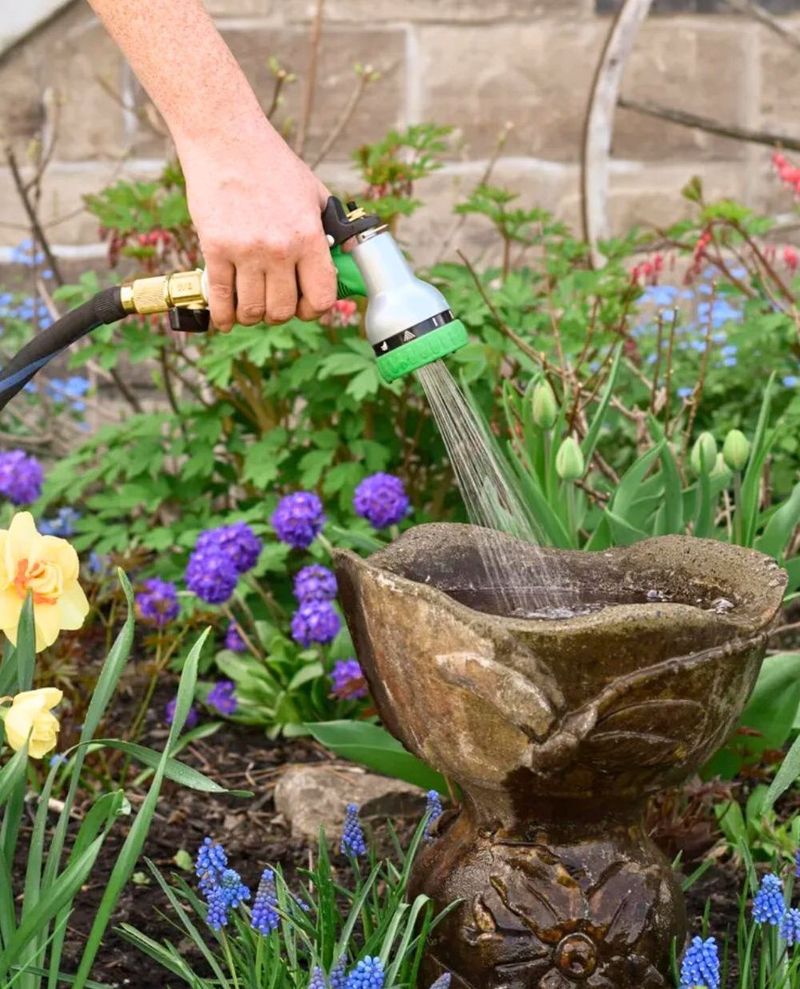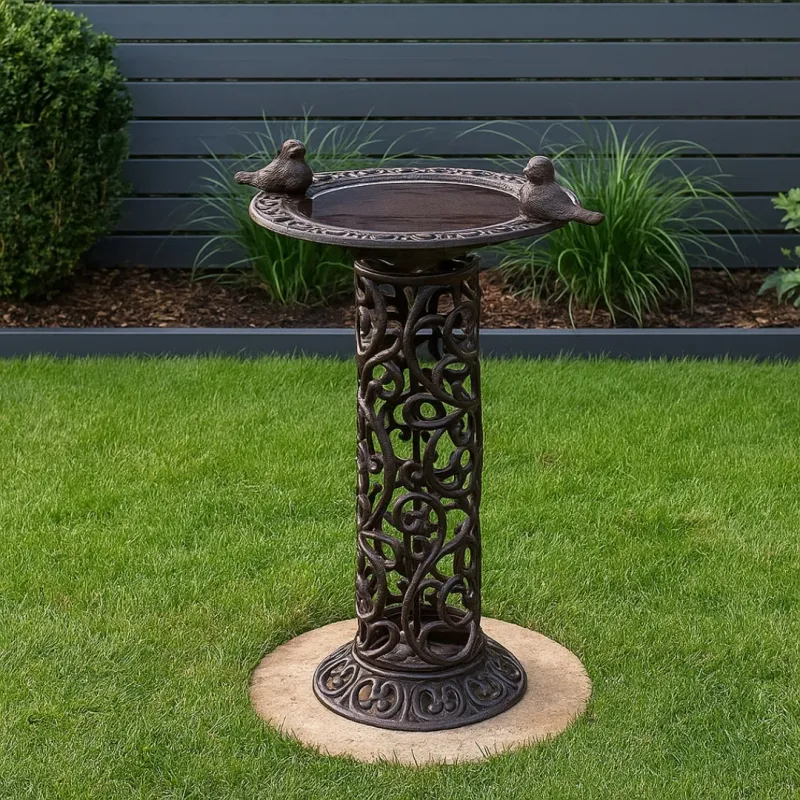As Georgia’s warm fall days start giving way to chilly winter nights, bird lovers need to think about their backyard bird baths.
Cold weather can damage these water features and harm the birds that depend on them. Knowing when and how to prepare your bird bath for winter helps protect both your investment and your feathered friends.
Watch November Temperature Patterns Closely
Georgia’s weather can be tricky during November when temperatures start their downward slide. Most parts of the state see their first hard freeze between mid-November and early December.
Keeping an eye on your local weather forecast helps you plan ahead. When nighttime temperatures consistently drop below 40 degrees Fahrenheit, it’s time to start thinking about your bird bath.
North Georgia residents should act sooner since mountain areas freeze earlier than coastal regions.
Ceramic And Stone Baths Risk Serious Cracking
Water expands when it freezes, and that’s bad news for certain bird bath materials. Ceramic, concrete, and stone bird baths are especially vulnerable to this natural process.
Even a small amount of water trapped in tiny cracks can expand and cause major damage overnight. Once the temperature drops to freezing, these materials can split or crumble completely.
Taking down vulnerable baths before the first freeze saves you from buying expensive replacements come spring.
Birds Still Need Water During Mild Winters
Georgia winters aren’t always brutally cold, and birds need water year-round for drinking and bathing. Completely removing your bird bath might leave local birds without this essential resource.
Consider switching to a heated bird bath instead of taking yours down entirely. These special models keep water from freezing while still providing a safe drinking spot.
Solar-powered heaters offer an eco-friendly option that works great during Georgia’s sunny winter days.
Proper Storage Prevents Off-Season Damage
Simply emptying your bird bath and leaving it outside isn’t enough protection. Rain, snow, and temperature swings can still cause problems even when the bath is dry.
Store your bird bath in a garage, shed, or covered porch where it stays dry and protected. Turn ceramic or concrete pieces upside down to prevent water from pooling in any crevices.
Wrapping delicate baths in old blankets or bubble wrap adds extra protection against accidental bumps.
Clean Thoroughly Before Putting Away
Algae, bird droppings, and mineral deposits build up in bird baths over time. Storing a dirty bath means you’ll face crusty, hardened grime when spring arrives.
Scrub your bath with a stiff brush and a mixture of one part vinegar to nine parts water. This natural solution removes buildup without harsh chemicals that could harm birds later.
Rinse everything completely and let it dry for at least 24 hours before storing to prevent mold growth.
Metal And Plastic Baths Handle Cold Better
Not all bird baths need to come inside for winter. Metal and high-quality plastic models typically withstand freezing temperatures without cracking or breaking.
These durable materials flex slightly as ice forms, preventing the catastrophic damage that ruins stone baths. However, you should still empty them regularly to prevent large ice blocks from forming.
Leaving these hardy baths outside gives you the flexibility to refill them during warmer winter days when birds are active.
Ground-Level Baths Need Extra Attention
Bird baths sitting directly on the ground face unique challenges during Georgia winters. Soil moisture can seep into the base, and ground frost creates additional freezing pressure from below.
These low baths also collect falling leaves and debris more easily, which traps moisture and increases freeze damage risk. Elevating your bath on bricks or pavers helps, but removal is still the safest option.
Ground frost in Georgia typically penetrates 2-4 inches deep during cold snaps.

